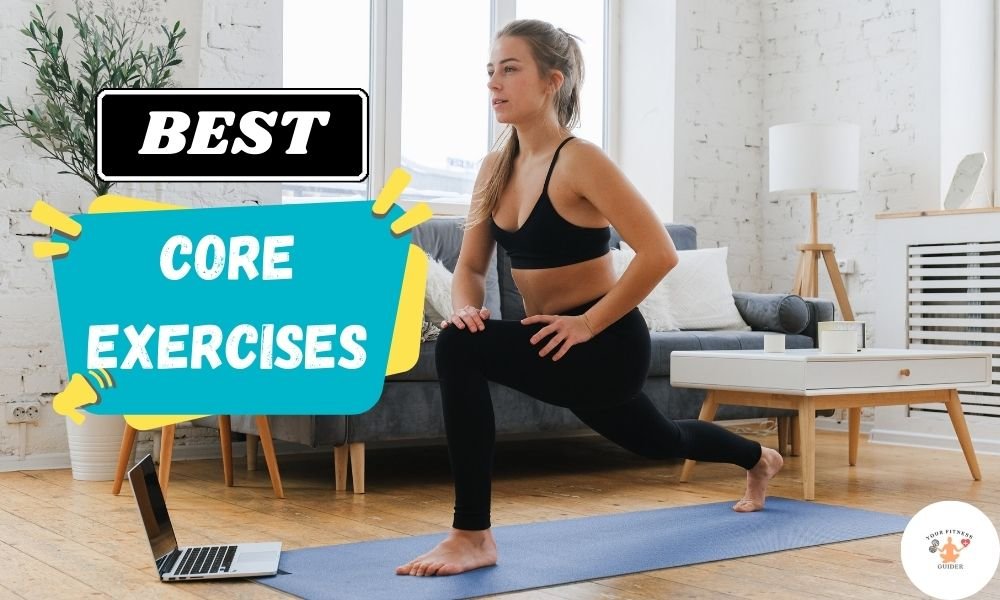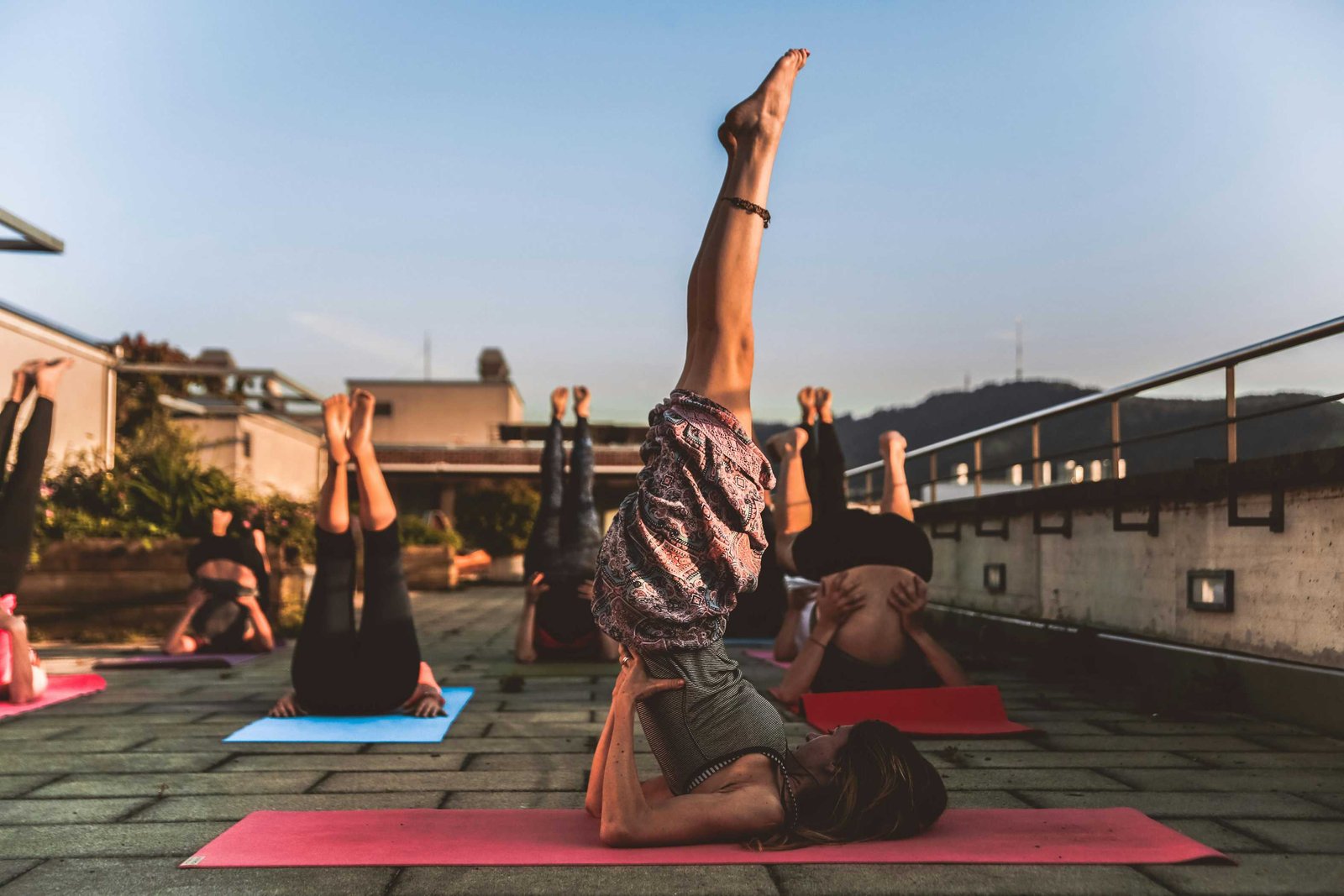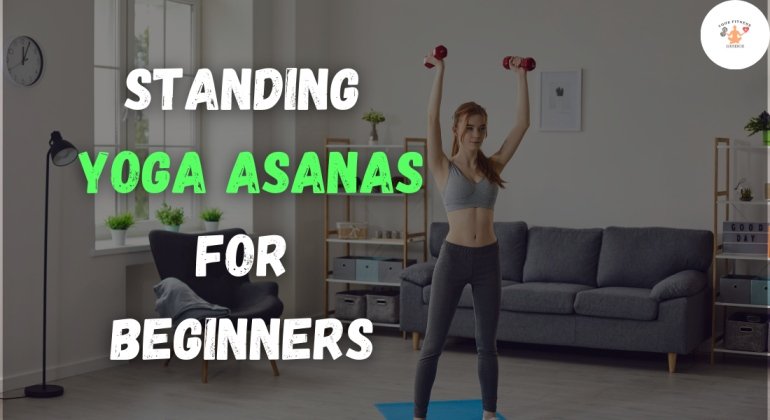
Standing yoga asanas, or poses, are foundational elements of any yoga practice. They form the backbone of many yoga sequences, offering stability, strength, and balance. These asanas not only build physical strength but also enhance mental focus and emotional equilibrium.
Benefits of Standing Yoga Asanas
Standing yoga asanas provide a multitude of benefits for the body, mind, and spirit. Here are some key advantages:
Physical Benefits
- Strength and Stability: Standing poses engage major muscle groups, including the legs, core, and back, helping to build overall strength and stability.
- Improved Posture: Practicing standing asanas promotes proper alignment and posture, reducing the risk of injuries and alleviating back pain.
- Flexibility: Regular practice of these poses increases flexibility in the hips, hamstrings, and spine, enhancing the overall range of motion.
Mental and Emotional Benefits
- Focus and Concentration: Balancing in standing poses requires mental concentration, fostering mindfulness and presence on and off the mat.
- Stress Relief: The combination of breath work and movement in standing asanas helps to calm the mind, reducing stress and anxiety.
- Confidence Boost: Mastering challenging standing poses instills a sense of accomplishment and confidence, both on and off the yoga mat.
Top 5 Standing Yoga Asanas for Beginners
1. Mountain Pose (Tadasana)
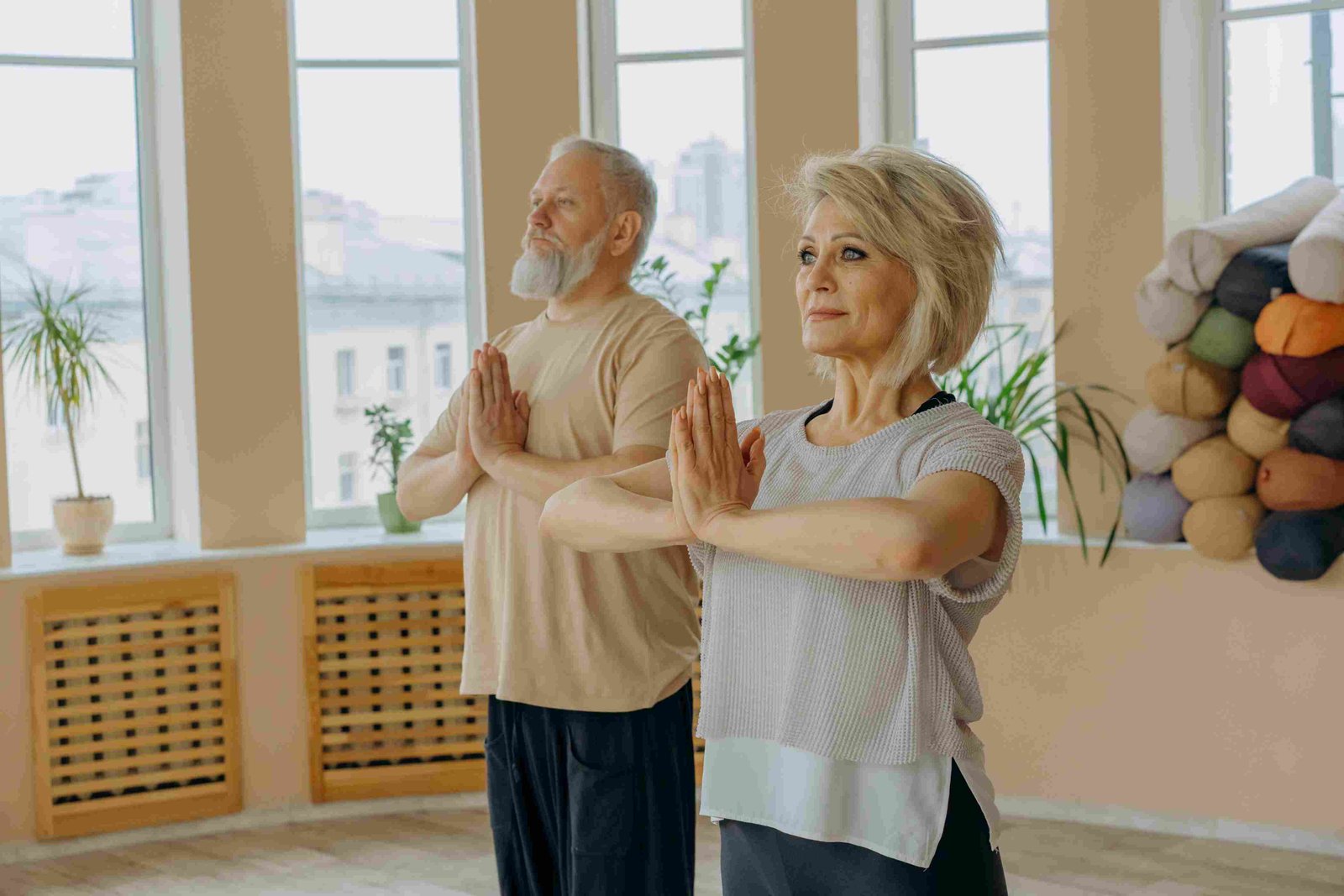
How to do it:
- Stand tall with your feet together, heels slightly apart, and arms by your sides.
- Distribute your weight evenly over both feet, forcefully pressing them into the floor.
- Engage your thigh muscles by lifting your kneecaps slightly, but without locking your knees.
- Lengthen your tailbone toward the floor, tucking your pelvis slightly under.
- Roll your shoulders back and down, open your chest, and extend your arms alongside your body with palms facing inward.
- Keep your neck aligned with your spine, and gaze forward softly.
- Breathe deeply and evenly, feeling the connection between your body and the earth beneath you.
Benefits:
- Improves posture: Tadasana helps in aligning the spine and promoting proper posture, reducing the risk of back and neck pain.
- Strengthens muscles: Holding the pose strengthens the thighs, knees, ankles, abdomen, and buttocks, promoting overall muscle tone.
Precautions:
- Avoid hyperextending knees: While in Tadasana, avoid locking your knees as it may strain the joint. Keep a slight bend in the knees to maintain stability and prevent injury.
- Watch for excessive arching of the back: Be mindful not to overach your lower back, which can strain the spine. Engage your abdominal muscles gently to support the lower back and maintain a neutral spine alignment.
2. Warrior I (Virabhadrasana I)
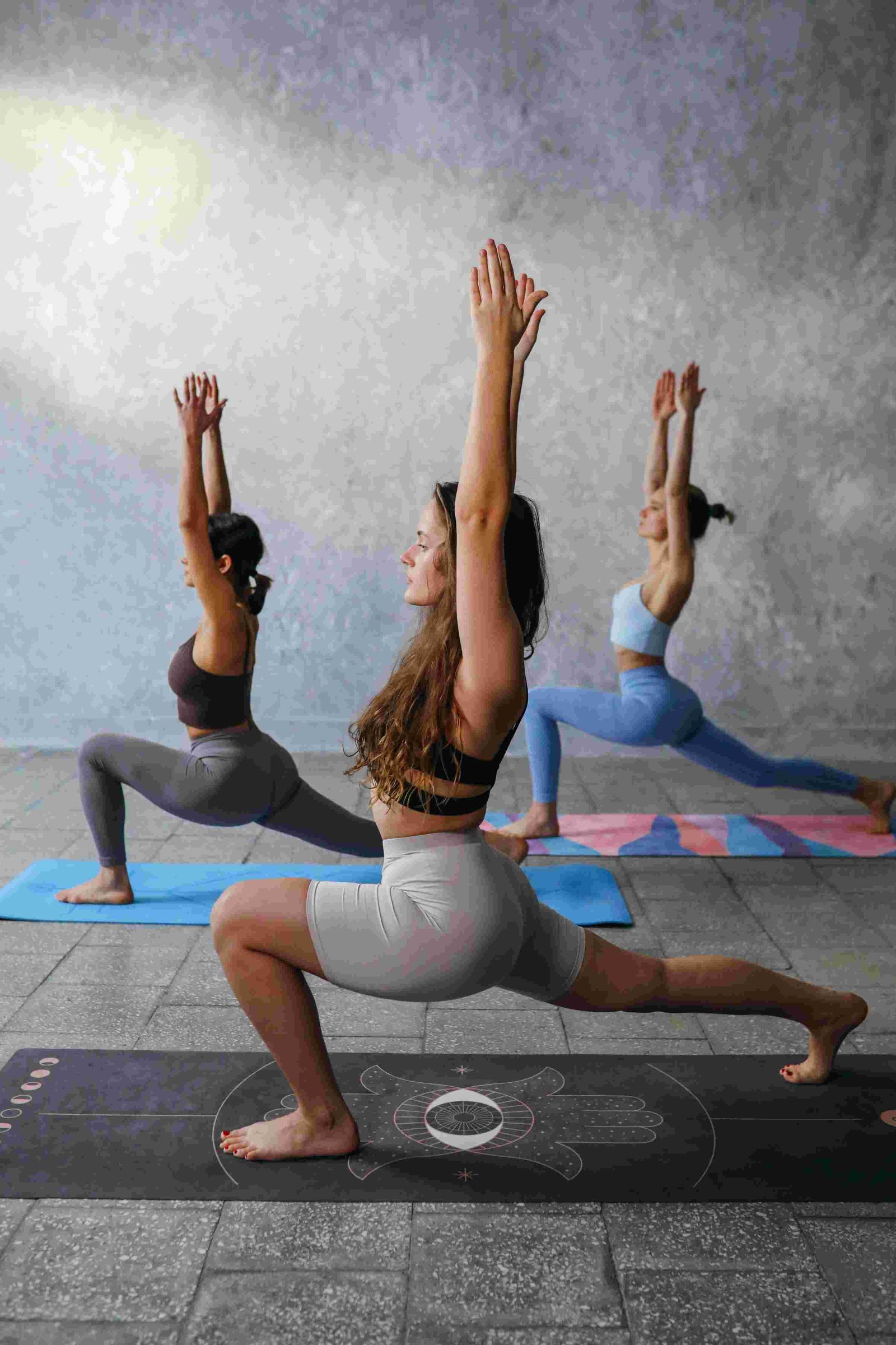
How to do it:
- Start in Mountain Pose (Tadasana), standing tall with your feet together and your arms at your sides.
- Step your left foot back about 3 to 4 feet, keeping the toes pointing slightly outward.
- Bend your right knee, ensuring it is directly over your right ankle, creating a 90-degree angle with the right thigh parallel to the floor.
- Ground the outer edge of your left foot firmly into the mat, keeping the left leg straight.
- Rotate your left foot about 45 degrees to the left, aligning the left heel with the right heel.
- Square your hips forward, drawing the left hip forward and the right hip back.
- Inhale as you raise your arms overhead, reaching up toward the sky with your palms facing each other or bringing the palms together.
- Keep your shoulders relaxed and away from your ears, gaze forward or slightly upward.
- Hold the pose for several breaths, then release by straightening the right leg and returning to Mountain Pose. Repeat on the other side.
Benefits:
- Strengthens legs: Warrior I strengthens the muscles of the legs, including the quadriceps, hamstrings, and calves, improving stability and balance.
- Opens hips: The posture stretches and opens the hips, increasing flexibility and mobility in this area.
Precautions:
- Avoid collapsing into the front knee: Be mindful not to let the front knee collapse inward; instead, engage the muscles of the outer thigh and hip to keep the knee aligned over the ankle, protecting the knee joint.
- Modify for knee issues: If you have knee pain or injury, you can reduce the depth of the front knee bend or place a folded blanket under the back heel for support, allowing for a gentler stretch.
3. Triangle Pose (Trikonasana)

How to do it:
- Start in Mountain Pose (Tadasana), standing tall with your feet together and your arms at your sides.
- Step your feet about 3 to 4 feet apart, ensuring both feet are parallel to each other.
- Extend your arms to the sides at shoulder height, palms facing down.
- Turn your right foot out 90 degrees to the right and your left foot slightly inward to the right.
- Inhale as you reach your right arm forward, lengthening through the right side of your body.
- Exhale and hinge at your right hip, lowering your right hand to your shin, ankle, or the floor outside your right foot.
- Extend your left arm straight up toward the sky, aligning it with your right arm, creating a straight line from fingertip to fingertip.
- Keep your chest open and facing forward, and gaze upward toward your left hand or down toward the floor, depending on your neck comfort.
- Hold the pose for several breaths, then inhale to come back up to standing. Repeat on the other side.
Benefits:
- Stretches the hamstrings and hips: Trikonasana provides a deep stretch to the hamstrings, groin, and hips, increasing flexibility and mobility in these areas.
- Strengthens the legs and core: Holding the pose engages the muscles of the legs, including the quadriceps and inner thighs, as well as the core muscles, improving strength and stability.
Precautions:
- Avoid hyperextending the front knee: Be mindful not to lock or hyperextend the front knee; instead, engage the thigh muscles to maintain a micro-bend in the knee, protecting the joint.
- Modify for neck issues: If you have neck pain or discomfort, avoid straining the neck by keeping the gaze neutral or looking downward, rather than turning the head upward.
4. Tree Pose (Vrikshasana)
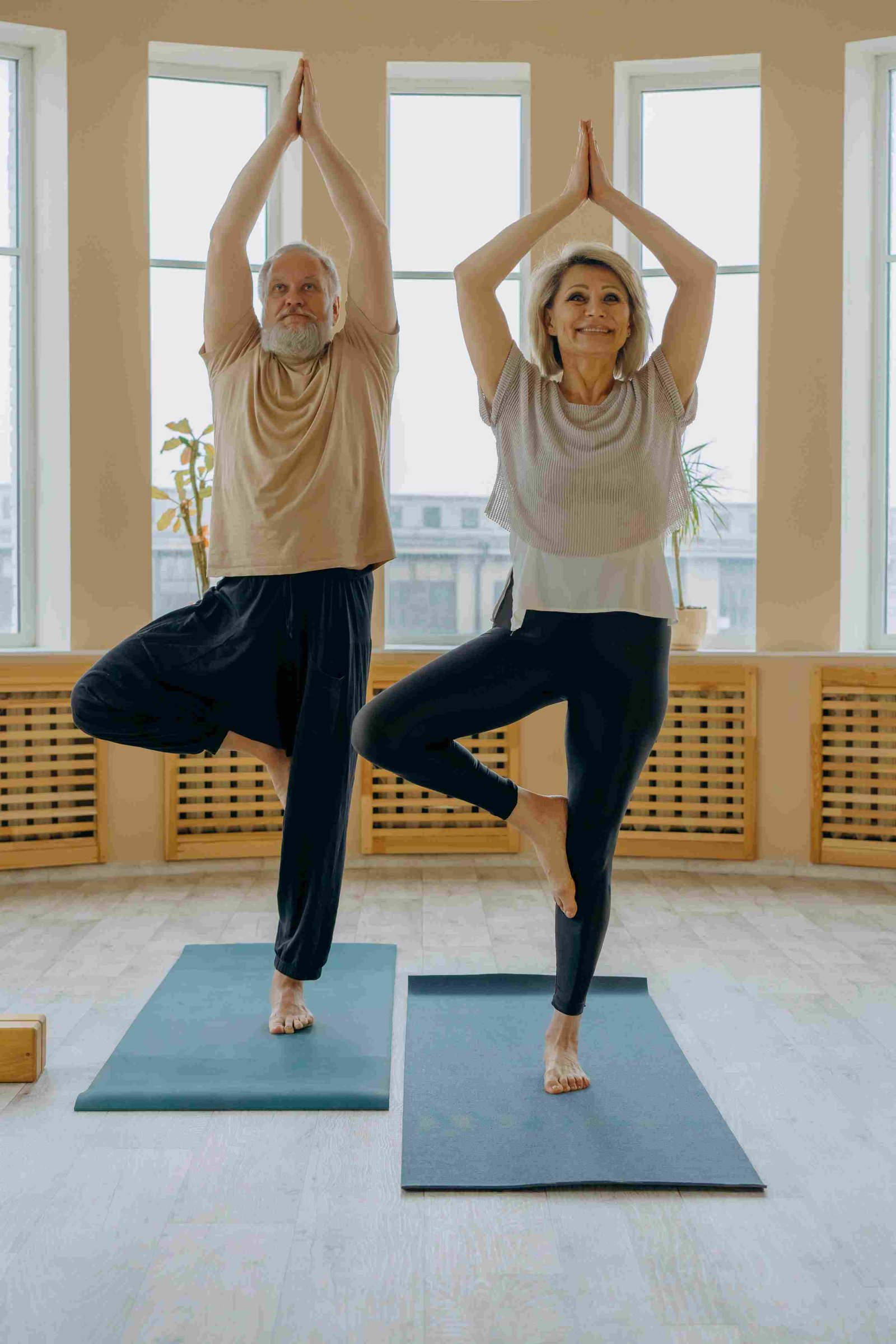
How to do it:
- Start in Mountain Pose (Tadasana), standing tall with your feet together and your arms at your sides.
- Shift your weight to your left foot, firmly pressing it into the floor.
- Bend your right knee and reach down with your right hand to grab your right ankle.
- Place the sole of your right foot on the inner left thigh or calf, avoiding the knee joint. Find a spot on the floor or wall to focus on to help with balance.
- Press the sole of your right foot firmly into the inner left thigh or calf, and engage your core muscles for stability.
- Bring your palms together at your heart center in a prayer position, or extend your arms overhead with palms facing each other.
- Keep your shoulders relaxed and down, and lengthen your spine upward.
- Hold the pose for several breaths, then slowly release and return to Mountain Pose. Repeat on the other side.
Benefits:
- Improves balance: Tree Pose helps to improve balance and coordination as you focus on grounding through one foot while balancing on the other.
- Strengthens legs: Holding the pose strengthens the muscles of the standing leg, including the quadriceps, hamstrings, and calves.
Precautions:
- Avoid placing the foot on the knee: To prevent strain or injury to the knee joint, avoid placing the foot directly on the knee. Instead, position the foot on the inner thigh or calf of the opposite leg.
- Use support if needed: If you have difficulty balancing, you can practice Tree Pose with your back against a wall or use a chair or wall for support until you feel more confident in your balance.
5. Chair Pose (Utkatasana)
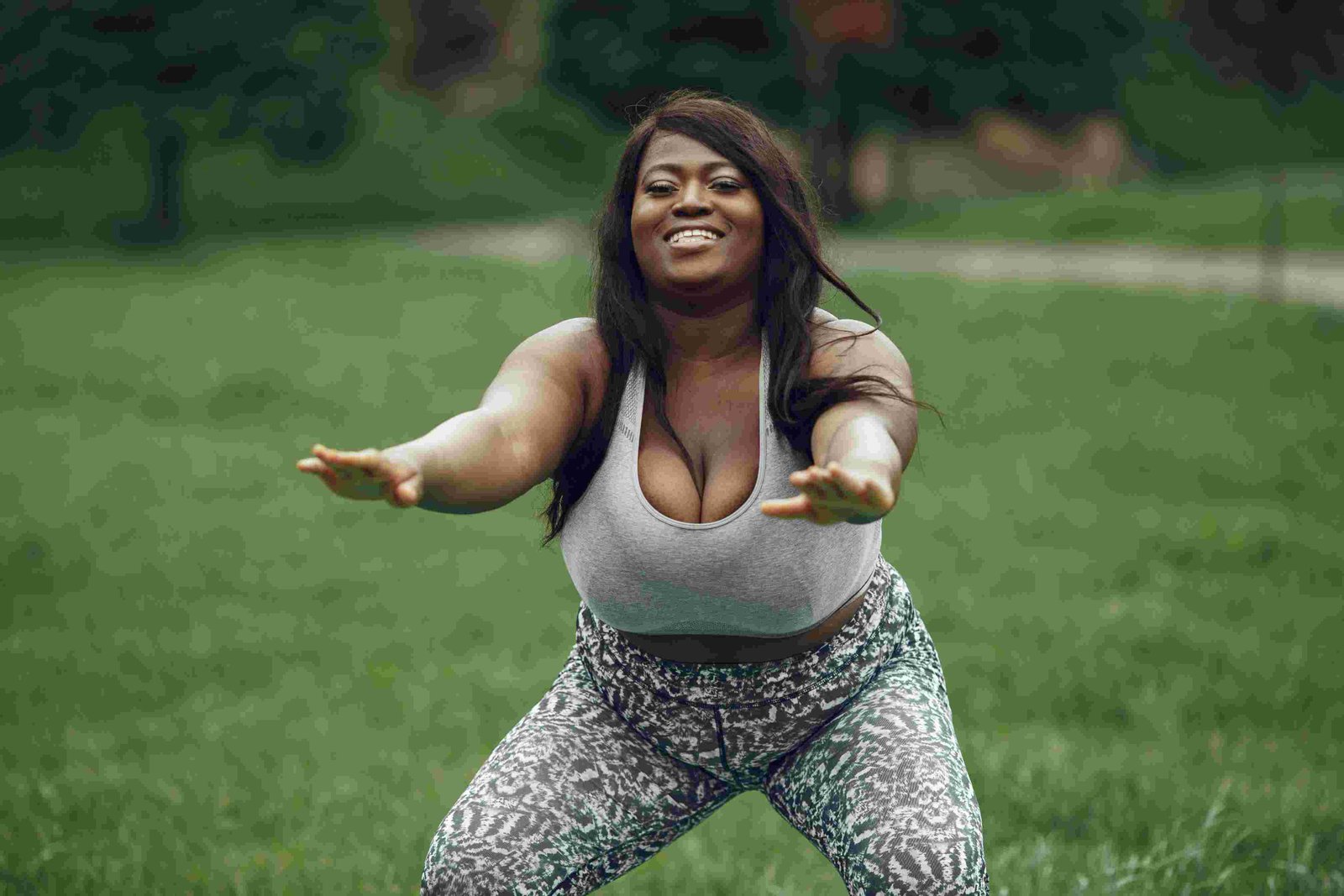
How to do it:
- Start in Mountain Pose (Tadasana), standing tall with your feet together and your arms at your sides.
- On an inhale, raise your arms overhead, palms facing each other or bringing the palms together.
- Exhale as you bend your knees and lower your hips as if sitting back into a chair, keeping your thighs parallel to the floor.
- Shift your weight back into your heels, keeping them grounded as much as possible.
- Engage your core muscles and lengthen your spine upward, avoiding rounding the back.
- Keep your chest lifted and your gaze forward, avoiding collapsing the chest or rounding the shoulders.
- Hold the pose for several breaths, breathing deeply and evenly.
- To release, inhale as you straighten your legs and return to Mountain Pose with arms by your sides.
Benefits:
- Strengthens lower body: Utkatasana strengthens the muscles of the legs, including the quadriceps, hamstrings, calves, and glutes.
- Improves balance: Holding the pose challenges balance and stability, helping to improve coordination and proprioception.
Precautions:
- Avoid collapsing the knees inward: Be mindful not to let the knees collapse inward; instead, keep them aligned over the ankles to protect the knee joints.
- Modify for knee issues: If you have knee pain or injury, you can reduce the depth of the knee bend or avoid lowering as far into the pose to alleviate strain on the knees.
Incorporating Standing Yoga Asanas Into Your Practice
Integrating standing poses into your yoga practice can be transformative, whether you’re a beginner or a seasoned practitioner. Here are some tips for incorporating these asanas effectively:
- Warm-Up: Start with gentle warm-up poses to prepare the body for standing poses, such as Cat-Cow or Sun Salutations.
- Mindful Alignment: Pay attention to alignment cues in each pose to avoid strain and maximize benefits.
- Breath Awareness: Coordinate movement with breath to create fluidity and ease in transitions between poses.
- Modifications and Props: Use props like blocks, straps, or a wall for support and to accommodate individual needs and abilities.
- Consistency: Practice standing poses regularly to build strength, flexibility, and confidence over time.
Conclusion
Standing yoga asanas are the cornerstone of a balanced and holistic yoga practice. By mastering these poses, you can cultivate physical strength, mental focus, and emotional well-being. Whether you’re a beginner or advanced practitioner, incorporating standing poses into your practice can deepen your connection to body, mind, and spirit.
FAQ’s
What are standing yoga asanas?
Standing yoga asanas are poses that involve maintaining a standing position while engaging various muscle groups for strength, stability, and balance.
What are the benefits of standing yoga asanas?
Standing yoga poses offer physical benefits such as improved strength, stability, and flexibility, along with mental benefits like enhanced focus, stress relief, and confidence building.
How do I perform Mountain Pose (Tadasana)?
To perform Mountain Pose, stand with feet together, distribute weight evenly, engage thigh muscles, lengthen tailbone, roll shoulders back, extend arms alongside body, and breathe deeply.
What are the benefits of Mountain Pose (Tadasana)?
Mountain Pose improves posture, strengthens muscles, relieves sciatica, and promotes overall muscle tone.
What precautions should I take while practicing Tree Pose (Vrikshasana)?
While practicing Tree Pose, avoid placing the foot on the knee to prevent strain or injury, and if needed, use support such as a wall or chair for balance.


